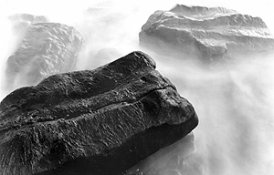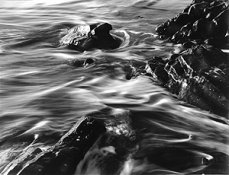My curse is that whenever I run across a scene or an immovable object that would make a nice photograph, the Sun is _always_ in the wrong position. If it is obvious that the light would strike it perfectly in the afternoon, you can bet that I am there in the morning and vice versa. One of my first posts to APUG , (Way, way back when I was a mere lad

) was to ask if anyone knew of a calculator or program that would allow me to plot the position of the sun so that I could determine the right time to return to a spot when the light would be as I wanted it. Aside from that, some scenes benefit with a dramatic sky full of clouds some in overcast, some with leaves on the trees (that's where I am in Winter) some with bare branches (me... Summer). I'm always in exactly the right photographic place at exactly the wrong photographic time.
When I find a good subject under bad conditions, which as I say is mostly often, I might take a couple of snaps, but I just file it away for a return when the conditions are right. Some of my best shots are ones that I had to return to at least once, usually more.
And then there are those times when you walk out the door look up, and the light is so unique and beautiful that you are desparate to find something to photograph. It's good to have a mental card file of reachable places at the ready.





 ) was to ask if anyone knew of a calculator or program that would allow me to plot the position of the sun so that I could determine the right time to return to a spot when the light would be as I wanted it. Aside from that, some scenes benefit with a dramatic sky full of clouds some in overcast, some with leaves on the trees (that's where I am in Winter) some with bare branches (me... Summer). I'm always in exactly the right photographic place at exactly the wrong photographic time.
) was to ask if anyone knew of a calculator or program that would allow me to plot the position of the sun so that I could determine the right time to return to a spot when the light would be as I wanted it. Aside from that, some scenes benefit with a dramatic sky full of clouds some in overcast, some with leaves on the trees (that's where I am in Winter) some with bare branches (me... Summer). I'm always in exactly the right photographic place at exactly the wrong photographic time. 

